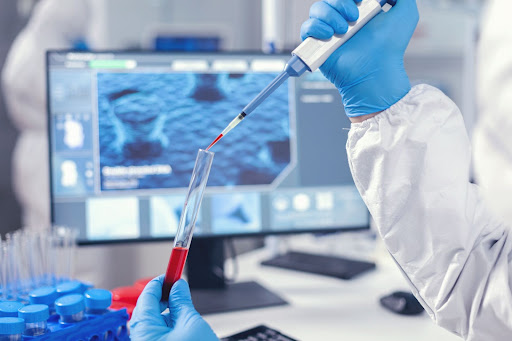

Contact Us Now
Upload Prescription
Not sure which tests to take? Share your prescription with us and our team will call you to book tests for you.

In this blog, you will learn everything about a TB blood test; keep on reading.
A TB test determines whether you have contracted tuberculosis (TB). A skin test and a blood test are the two different forms of TB tests. A latent (dormant) or current TB infection cannot be detected by TB skin and blood tests, which only reveal whether you have ever been exposed to the TB-causing bacterium.
A potentially dangerous infectious disease that primarily affects the lungs is tuberculosis (TB). People can contract tuberculosis from one another by coughing or sneezing tiny droplets of bacteria into the air.
Most medications used to treat tuberculosis don’t work on many forms of the disease. For months, people with active tuberculosis must take various medications to treat the infection and stop the development of antibiotic resistance.
A blood test for TB, commonly known as an IGRA (interferon-gamma release assay), determines whether a person is infected with Mycobacterium tuberculosis.
These blood tests can only indicate if a person has an infection; they cannot distinguish between an inactive infection, often known as latent TB, or an active TB disease. A medical history, physical examination, chest X-rays, and more laboratory testing are required to ascertain whether a person has TB disease. Visit the blood diagnostic centre near you for all the diagnostic services.
In addition to the kidneys, spine, and brain, other regions of your body might be impacted by tuberculosis. The symptoms and indicators of tuberculosis (TB) depend on the organs affected.
For example, tuberculosis in the kidneys might result in blood in the urine, while tuberculosis in the spine can result in back pain.
When TB is latent, the patient’s immune system can combat the illness and stop the spread of the TB bacteria. The bacterium can remain dormant in these individuals for a lifetime without leading to illness. However, the bacteria may become active later and result in TB disease in different circumstances, particularly in those at a higher risk.
Within the first two years of infection, latent TB patients are more likely to develop an active disease. Evidence suggests that 5-10% of patients with a TB infection will go untreated and acquire TB illness.
When the immune system cannot prevent the germs from expanding and multiplying, TB illness develops. When the bacteria is active, it causes human symptoms, including fever, chest pain, and blood or sputum coughing. Those who have TB disease can spread the disease to others.
Numerous individuals with latent TB never experience TB illness. Nevertheless, TB disease can strike some people weeks after contact to the bacterium. Others may get an illness year down if their immune system deteriorates for some other cause. Because of this, it’s critical to recognize and address the illness while it’s still dormant.
Your doctor will use a stethoscope to listen to your lungs during the physical examination and will check your lymph nodes for edema.
Skin tests are still the most popular method of diagnosing tuberculosis; while blood tests are increasingly employed, you can also order a tuberculosis blood test at home.
Latent or active tuberculosis can be confirmed or ruled out by blood tests. These examinations measure how your immune system responds to TB bacteria.
Just one blood diagnostic centre near you visit is necessary for these examinations. A blood test may be helpful if you have a high risk of contracting TB but a negative skin test result, or if you recently received the BCG vaccine.
A person can consult with a doctor who can prescribe a TB blood test near you if they believe they may have been exposed to tuberculosis or exhibit signs of the disease. The test can be done by a healthcare expert in a reputable diagnostic centre or a home.
A medical professional will use a needle to collect blood samples for the test and send them to a lab in a unique tube. Within a day, you will get your blood test results.
TB is an infectious disease that can be fatal and an essential technique for determining whether TB bacteria are present in a person’s body is a TB blood test near you. Doctors must do additional testing to identify whether a patient has latent or active TB.
Visit Simira Diagnostics, the nearest diagnostic centre, if you need to do a blood test today.
Copyright © Simira Healthcare Private Limited 2024. All Rights Reserved
This will close in 0 seconds
This will close in 0 seconds
Leave a Reply